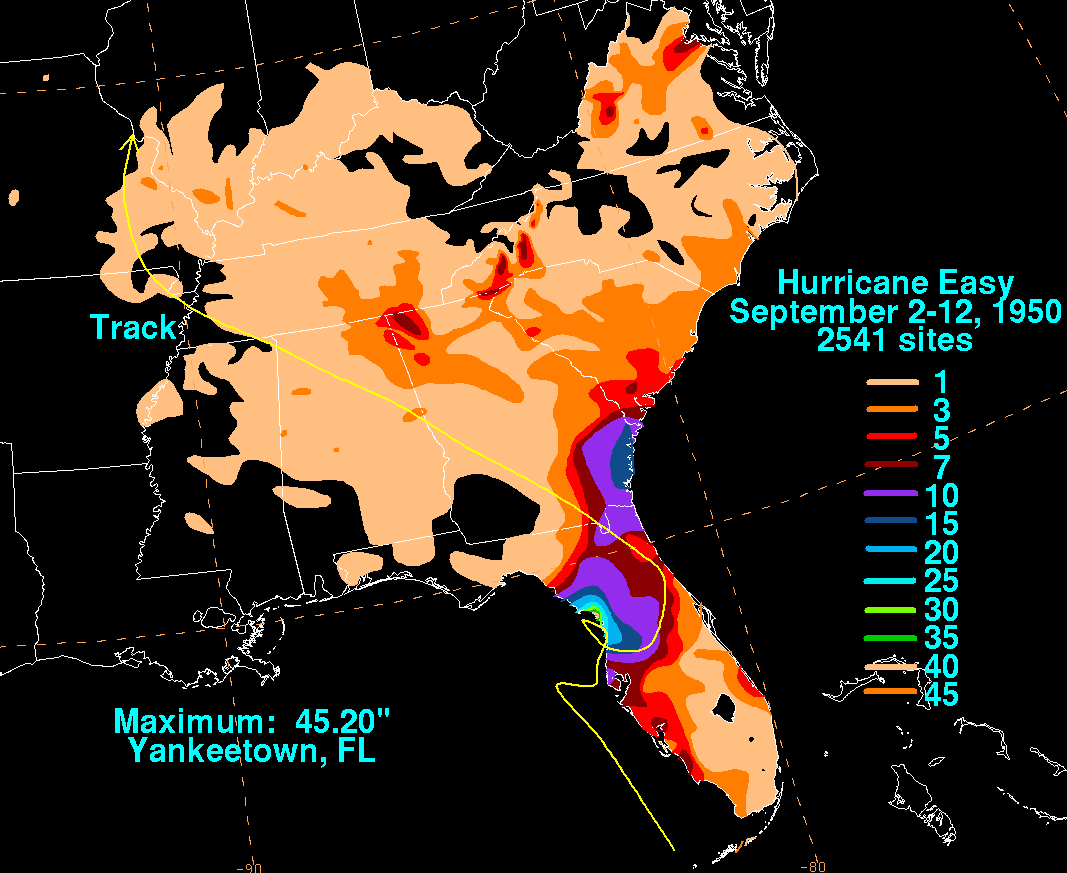|
Hurricane Easy (other)
The name Easy was given to three tropical cyclones in the Atlantic Ocean. * Hurricane Easy (1950) - made landfall in Florida as a Category 3 hurricane; caused heavy damage in Cedar Key and produced heavy rainfall * Hurricane Easy (1951) - Category 4 hurricane that never threatened land. * Hurricane Easy (1952) - a minor storm {{DEFAULTSORT:Easy Atlantic hurricane set index articles ... [...More Info...] [...Related Items...] OR: [Wikipedia] [Google] [Baidu] |
Tropical Cyclone
A tropical cyclone is a rapidly rotating storm system characterized by a low-pressure center, a closed low-level atmospheric circulation, strong winds, and a spiral arrangement of thunderstorms that produce heavy rain and squalls. Depending on its location and strength, a tropical cyclone is referred to by different names, including hurricane (), typhoon (), tropical storm, cyclonic storm, tropical depression, or simply cyclone. A hurricane is a strong tropical cyclone that occurs in the Atlantic Ocean or northeastern Pacific Ocean, and a typhoon occurs in the northwestern Pacific Ocean. In the Indian Ocean, South Pacific, or (rarely) South Atlantic, comparable storms are referred to simply as "tropical cyclones", and such storms in the Indian Ocean can also be called "severe cyclonic storms". "Tropical" refers to the geographical origin of these systems, which form almost exclusively over tropical seas. "Cyclone" refers to their winds moving in a circle, whirling round ... [...More Info...] [...Related Items...] OR: [Wikipedia] [Google] [Baidu] |
Hurricane Easy (1950)
Hurricane Easy was the fifth tropical storm, hurricane, and major hurricane of the 1950 Atlantic hurricane season. The hurricane developed in the western Caribbean Sea on September 1, and tracked northeastward. After crossing Cuba, the hurricane rapidly strengthened in the eastern Gulf of Mexico to reach peak winds of 120 mph (200 km/h). Easy executed a cyclonic loop, moved northeastward to hit near Cedar Key, Florida, executed a second loop, and hit western Florida again. After rapidly weakening over Florida, the hurricane turned to the northwest, and ultimately dissipated over northeastern Arkansas on September 9. From the point when Hurricane Easy entered the Gulf of Mexico until it weakened to a tropical storm, it was observed nearly constantly from radars or Reconnaissance Aircraft. Easy is the most recent major hurricane to strike the Homosassa, Florida, area. Due to the hurricane remaining near the northwest Florida coast for an extended period of time, Easy prod ... [...More Info...] [...Related Items...] OR: [Wikipedia] [Google] [Baidu] |
Hurricane Easy (1951)
The 1951 Atlantic hurricane season was the first hurricane season in which tropical cyclones were officially named by the United States Weather Bureau. The season officially started on June 15, when the United States Weather Bureau began its daily monitoring for tropical cyclone activity; the season officially ended on November 15. It was the first year since 1937 in which no hurricanes made landfall on the United States; as Hurricane How was the only tropical storm to hit the nation, the season had the least tropical cyclone damage in the United States since the 1939 season. As in the 1950 season, names from the Joint Army/Navy Phonetic Alphabet were used to name storms this season. The first hurricane of the season, Able, formed prior to the official start of the season; before reanalysis in 2015, it was once listed as the earliest major hurricane on record in the Atlantic basin. It formed on May 16 and executed a counterclockwise loop over the Bahamas; late ... [...More Info...] [...Related Items...] OR: [Wikipedia] [Google] [Baidu] |
Hurricane Easy (1952)
The 1952 Atlantic hurricane season was the last Atlantic hurricane season in which tropical cyclones were named using the Joint Army/Navy Phonetic Alphabet. It was a near normal Atlantic hurricane season, although it was the least active since 1946. The season officially started on June 15; however, a pre-season unnamed storm formed on Groundhog Day, becoming the only storm on record in the month of February. The other six tropical cyclones were named using the Joint Army/Navy Phonetic Alphabet, the first of which formed on August 18. The final storm of the season dissipated on October 28, two and a half weeks before the season officially ended on November 15. Four of the tropical cyclones made landfall during the season, the first being the February tropical storm that crossed southern Florida. The first hurricane, named Able, struck South Carolina with winds of , causing heavy damage near the coast and widespread power outages. It moved up most of the East ... [...More Info...] [...Related Items...] OR: [Wikipedia] [Google] [Baidu] |
